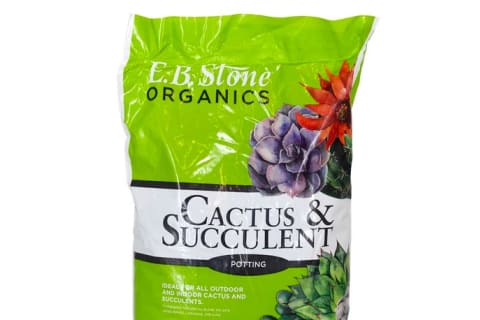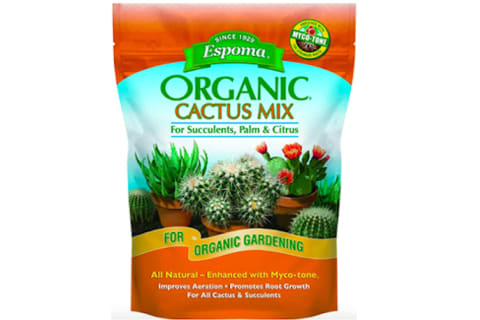This means that unlike tropical plants (pothos, philodendron, etc.) that prefer slightly damp soils stuffed with lots of organic materials from decaying bark and leaves, succulents hail from very dry soil that is higher in inorganic materials like rock. That’s what you’re looking to recreate when keeping succulents at home. Here are a few of the materials that you’ll find in a well-balanced succulent mix: E.B. Stone and Espoma make two of Cohen’s favorite organic blends: While Cohen usually opts to buy premade soil, she says the following DIY mix can be great for plants too. The basic recipe uses any old potting or garden soil you have lying around and pumice—Cohen’s favorite inorganic material for succulent mixes because it’s light, airy, and allows for proper drainage. She notes that the key to making your own succulent mix is including enough of those inorganic materials like pumice, coarse sand, gravel, or perlite. If your soil has too much organic material, it won’t have enough aeration and it could effectively drown your plants. Follow the step-by-step process below for planting your succulent in a mix that will feel just like home. Emma received her B.A. in Environmental Science & Policy with a specialty in environmental communications from Duke University. In addition to penning over 1,000 mbg articles on topics from the water crisis in California to the rise of urban beekeeping, her work has appeared on Grist, Bloomberg News, Bustle, and Forbes. She’s spoken about the intersection of self-care and sustainability on podcasts and live events alongside environmental thought leaders like Marci Zaroff, Gay Browne, and Summer Rayne Oakes.




